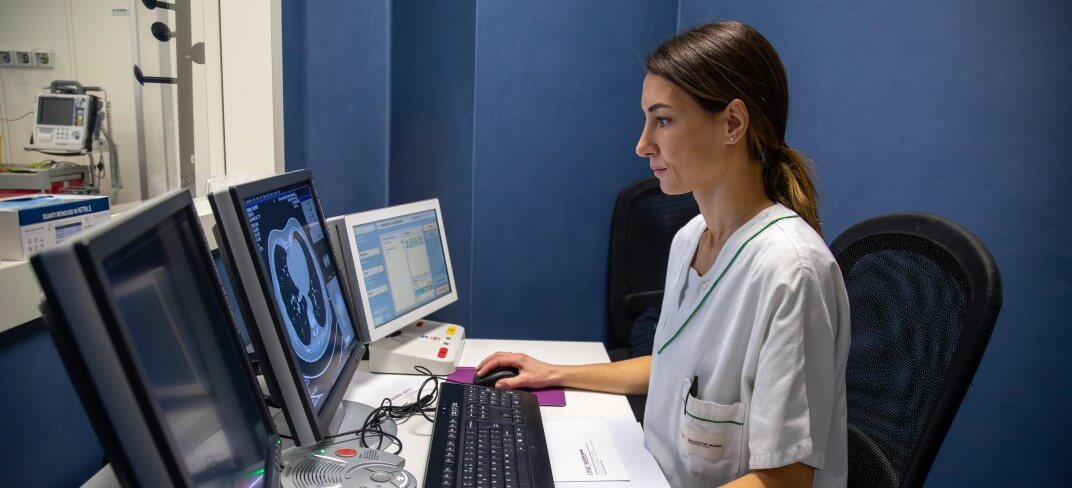Angiological Diagnostics: Why It Is Important

The circulatory system, comprising arteries, veins, capillaries and lymphatic vessels, can be a source of discomfort, pain and problems of varying severity affecting different areas of the body.
The most common problems include conditions of the venous system of the lower limbs, such as varices, phlebitis, ulcers, arterial disease and lymphoedema. These conditions can manifest with symptoms such as heavy, swollen and painful legs, difficulty walking and changes in the appearance and colour of the extremities.
In addition, more serious conditions such as venous thrombosis, aneurysms, chronic obstructive arteriopathy, atherosclerosis and carotid stenosis require specialist attention.
Prevention of cardiovascular disease is crucial, even in the absence of symptoms but in the presence of risk factors such as sedentary lifestyle, family history, obesity, diabetes and high blood pressure.
Angiological and vascular diagnostics play a fundamental role in the study of these conditions, supporting specialists in detailed anamnesis, accurate prevention and the identification of the most appropriate personalised treatment.
Who to turn to?
The angiologist or vascular surgeon are the specialists to whom one should turn for an adequate assessment of the problem and indication of the diagnostic-therapeutic course.
During the examination, the specialist will analyse the patient's medical history, both personal and family, to identify any risk factors and past or ongoing therapies. He/she will assess the symptoms present and proceed with a physical examination of the affected body districts. If necessary, he/she will prescribe the most appropriate diagnostic tests to investigate the specific problem in order to determine the most appropriate therapy for the patient.
Angiological diagnostic examinations for angiological and vascular problems
Diagnostic examinations performed to assess angiological and vascular conditions may include:
- Echocolordoppler: arterial and venous, of the upper and lower limbs, renal arteries, vessels of the neck, abdominal aorta and large vessels of the abdomen, intracranial district.
- CT (Angio CT): of the neck and carotid arteries, coronary arteries, abdominal and thoracic aorta, iliac arteries, lower limbs, intracranial and neck.
- MRI (Angio MRI): of the abdominal and thoracic aorta, iliac arteries, renal arteries, lower and upper limbs, neck, skull, intracranial circulation, splanchnic vessels).